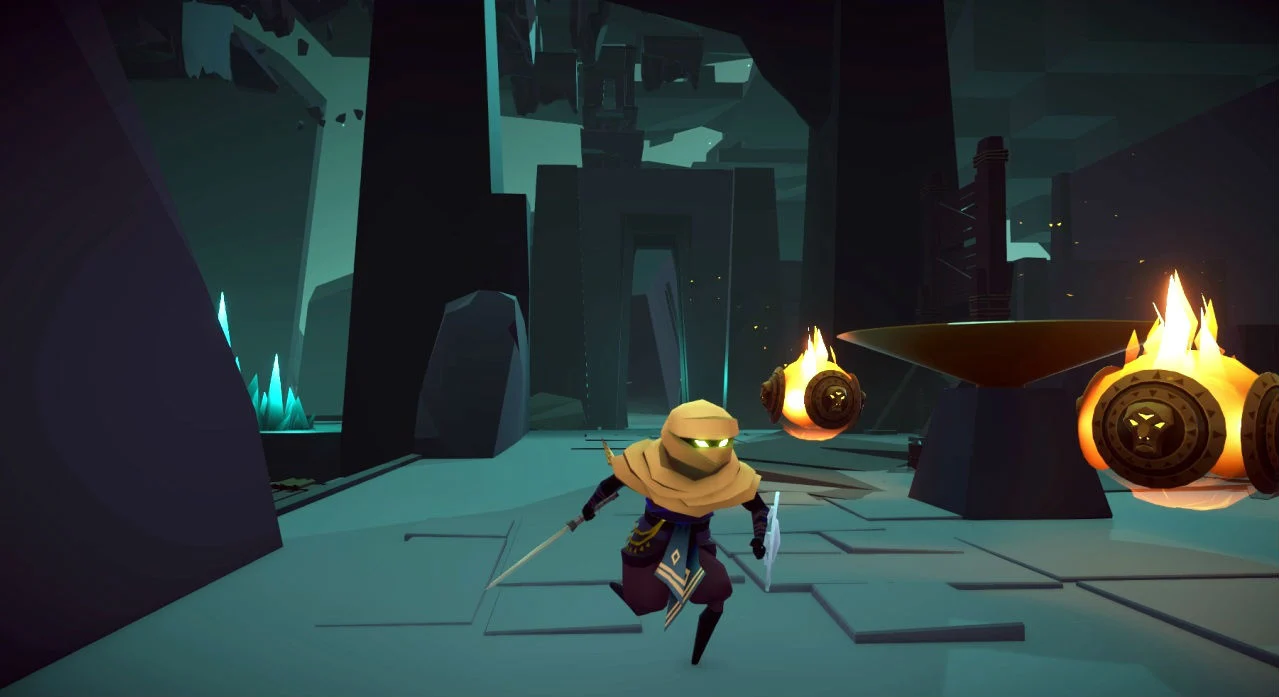The future of gaming is rapidly evolving with the advancements in artificial intelligence and procedural generation in games. AI technology is being integrated into game development to create more immersive and intelligent non-player characters, while procedural generation techniques are being used to dynamically generate game content such as levels, environments, and quests. This combination of AI and procedural generation is revolutionizing the way games are created and experienced, offering endless possibilities for unique and personalized gameplay experiences.
As the gaming industry continues to embrace the potential of AI and procedural generation, it is opening up new opportunities for innovative game design and storytelling. With AI, games can adapt and respond to the player’s actions in real time, creating a more dynamic and personalized gameplay experience. Procedural generation allows for the creation of vast, open worlds with limitless possibilities, ensuring that no two playthroughs are ever the same. These advancements are reshaping the future of gaming, providing players with more diverse, engaging, and unpredictable experiences.
The Rise of AI in Gaming
Artificial Intelligence (AI) has been making significant strides in the gaming industry, revolutionizing the way games are played and experienced. AI-powered characters and NPCs (non-playable characters) are becoming more sophisticated, with the ability to adapt to player behavior and provide dynamic, challenging gameplay. This technology has also been used to enhance the realism of in-game environments, creating more immersive and responsive worlds for players to explore.
Furthermore, AI is being utilized to personalize the gaming experience, offering tailored content and challenges based on individual player preferences and skill levels. This level of customization not only enhances player engagement but also opens up new avenues for storytelling and game design, as AI can generate unique narratives and scenarios based on player interactions.
The Impact of Procedural Generation on Game Worlds
Procedural generation, a technique that uses algorithms to create content dynamically, has been instrumental in shaping the vast and diverse worlds found in modern games. This approach allows developers to generate expansive and intricate game environments without the need for manual design, resulting in virtually limitless possibilities for exploration and discovery. From terrain and level design to in-game assets and items, procedural generation has streamlined the development process while offering players a sense of unpredictability and novelty with each playthrough.
Additionally, procedural generation has contributed to the longevity of games by ensuring that no two experiences are exactly alike, fostering replayability and sustained interest among players. By continuously generating new challenges and content, games can remain engaging and relevant long after their initial release, providing a more enduring and evolving entertainment experience.
Enhancing Player Engagement and Immersion
AI and procedural generation have collectively elevated the level of player engagement and immersion in games. AI-driven elements, such as intelligent enemy behavior and responsive in-game companions, create more dynamic and compelling interactions for players, fostering a deeper sense of connection to the game world. This heightened level of engagement is further amplified by the unpredictability and complexity introduced through procedural generation, as players are constantly presented with new experiences and challenges that keep them invested in the game.
Moreover, the combination of AI and procedural generation allows for the creation of more lifelike and organic game worlds, where the behavior of NPCs, the layout of environments, and the distribution of resources can evolve and adapt in response to player actions. As a result, players are immersed in living, breathing virtual landscapes that feel vibrant, responsive, and endlessly captivating.
The Evolution of Game Design and Development
AI and procedural generation have prompted a paradigm shift in game design and development, empowering creators to explore innovative approaches to content creation and gameplay mechanics. With AI’s capacity for generating dynamic narratives and adapting to player choices, game designers can craft more personalized and branching storylines that cater to individual player experiences, offering a level of narrative depth and player agency that was previously unattainable.
Furthermore, procedural generation has redefined the way in which game worlds are conceived and realized, allowing for the seamless generation of expansive, detailed landscapes and environments. This not only streamlines the development process but also enables developers to focus on fine-tuning gameplay mechanics and narrative elements, ultimately delivering more polished and immersive gaming experiences to players.
The Potential for Infinite Content and Replayability
AI and procedural generation have unlocked the potential for infinite content and replayability in games, fundamentally altering the way players engage with and experience game worlds. By leveraging AI to dynamically generate quests, encounters, and events, developers can offer players an ever-expanding array of content, ensuring that there is always something new and unexpected to discover with each playthrough.
Additionally, procedural generation has paved the way for games that are inherently replayable, as the randomized nature of generated content ensures that no two playthroughs are identical. This not only extends the longevity of games but also encourages players to revisit and engage with the game world in new ways, fostering a sense of discovery and exploration that transcends traditional, static game experiences.
The Ethical and Moral Implications of AI in Gaming
As AI becomes more integrated into gaming experiences, there are ethical and moral considerations that must be addressed. The use of AI to create realistic and emotionally engaging characters raises questions about the potential impact on player empathy and emotional well-being, especially in games that explore challenging or sensitive themes. Additionally, the deployment of AI in player behavior analysis and personalized content delivery necessitates careful consideration of player privacy and consent, ensuring that the use of AI respects and safeguards player autonomy.
Furthermore, the development of AI-driven NPCs with advanced decision-making capabilities raises ethical concerns surrounding the portrayal of AI characters and the potential reinforcement of harmful stereotypes or biases. It is crucial for developers to critically evaluate the implications of AI integration in games and prioritize ethical considerations to ensure that AI enhances the gaming experience in a responsible and respectful manner.
AI and Procedural Generation in Game Development Tools
The integration of AI and procedural generation in game development tools has revolutionized the way games are created and refined. Through the use of AI-powered tools, developers can automate time-consuming tasks such as asset creation, level design, and playtesting, streamlining the development process and empowering creators to focus on higher-level creative endeavors. This not only accelerates the pace of game development but also fosters innovation by providing developers with the freedom to experiment and iterate more efficiently.
Moreover, procedural generation tools have become indispensable for generating vast and intricate game worlds, offering developers the ability to rapidly prototype and iterate on level designs and environmental layouts. By harnessing the power of procedural generation, developers can efficiently produce diverse and expansive game environments, ensuring that the creative vision for the game is realized with greater ease and flexibility.
The Future of AI-Generated Content in Games
Looking ahead, the future of AI-generated content in games holds immense potential for redefining the scope and scale of interactive experiences. AI’s capacity for generating nuanced and adaptive narratives paves the way for games that offer truly personalized and immersive storytelling experiences, where player choices and interactions shape the direction and outcome of the narrative in profound and meaningful ways. This evolution in narrative design has the potential to revolutionize the way players engage with and experience video game narratives, creating more emotionally resonant and impactful storytelling experiences.
Furthermore, as AI continues to advance, the potential for AI-generated content to extend beyond narrative elements into the realm of gameplay mechanics and level design is on the horizon. With AI-driven systems capable of dynamically adapting and evolving in response to player input, the future of gaming holds the promise of endlessly dynamic and evolving game worlds that offer unparalleled levels of immersion and player agency.
Challenges and Limitations of AI and Procedural Generation
While AI and procedural generation offer substantial benefits to game development, there are inherent challenges and limitations that must be navigated. The inherent complexity of AI systems and the need for robust computational resources pose significant technical hurdles, requiring developers to carefully balance performance considerations with the desire for sophisticated AI-driven experiences. Additionally, ensuring that AI-generated content maintains a high level of quality and coherence presents a creative challenge, as developers must strike a balance between procedural variety and curated design.
Furthermore, the ethical considerations surrounding the use of AI in gaming, including issues related to player privacy, emotional well-being, and representation, demand careful attention and thoughtful implementation. Balancing the potential of AI and procedural generation with ethical and moral considerations is crucial for ensuring that these technologies are leveraged in a responsible and respectful manner, prioritizing the well-being and autonomy of players.
Embracing Innovation and Creativity in Game Development
AI and procedural generation represent an unprecedented opportunity for game developers to embrace innovation and creativity, pushing the boundaries of what is possible in game design and storytelling. By leveraging AI’s capacity for dynamic content generation and procedural systems, developers can craft games that offer unparalleled levels of immersion, replayability, and personalized experiences, revolutionizing the way players engage with interactive entertainment. This wave of innovation not only empowers developers to create more ambitious and expansive game worlds but also challenges them to explore new frontiers in narrative design and player agency.
Moreover, the integration of AI and procedural generation in game development tools provides developers with the means to streamline the creative process, enabling more efficient iteration and experimentation. This fosters a culture of innovation and risk-taking, empowering developers to explore bold and unconventional ideas with the support of cutting-edge technological tools, ultimately leading to the emergence of groundbreaking and transformative gaming experiences.
| Component | Description |
|---|---|
| AI in Gaming | AI is being used to create more realistic and challenging non-player characters (NPCs) in games. |
| Procedural Generation | This technique is used to create game content algorithmically, allowing for infinite possibilities and replay value. |
| Benefits | AI and procedural generation can lead to more immersive, dynamic, and unique gaming experiences. |
| Challenges | There are still technical and ethical challenges to overcome in implementing AI and procedural generation in games. |
The future of gaming is being shaped by advancements in AI and procedural generation. These technologies are enabling game developers to create more immersive and dynamic experiences for players, with realistic AI-controlled characters and procedurally generated content. While there are still challenges to overcome, the potential for the future of gaming is vast and exciting.



